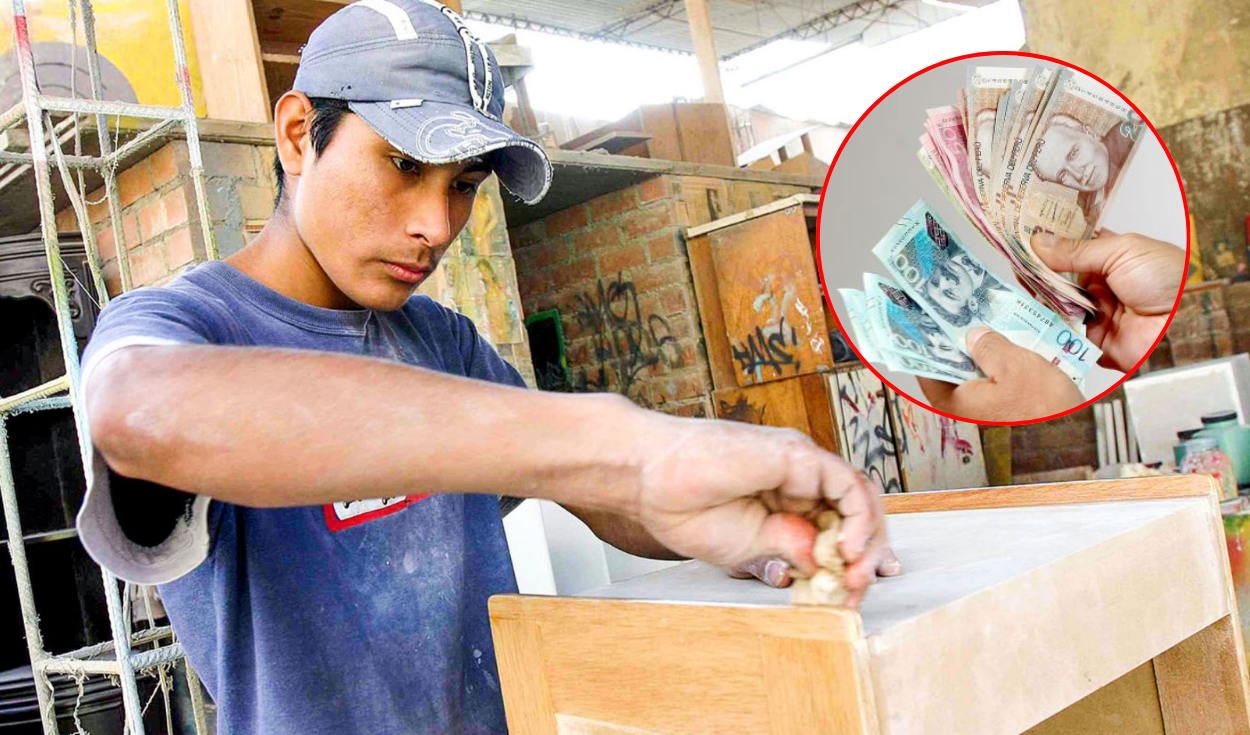
In 2024, the Peruvian intended salary increased 6.48%. However, and according to the last report of the Bumeran labor market, leading employment portal in Latin America, at the junior level the average salary lower does not reach the amount of the minimum vital remuneration (RMV) of S/1,130.
“The number of people available for certain positions influences salary expectations,” said Fernando Picros, economist and former Deputy Minister of Employment, to the Republic.
Alejandra Dinegro, labor specialist at the National University of San Marcos (UNMSM), explained to this newspaper that the factors that affect salaries in Peru are four: economic sectors, level of specialization, work experience, and geographical location.
In that sense, the positions with the lowest average pretended remuneration in the Junior level They are observed in external communications with S/1,028, followed by art and culture with S/1,035, international legal advice with S/1,100 soles, customer service, electromechanical engineering, selection and database administration with S/1,500.
It should be noted that the purchasing power of workers in Lima at the end of 2024 has been reduced by S/100. Peru has the eighth worst salary in South America, according to Bloomberg.
Employment notices
In it Peruvian labor marketemployment calls reveal a trend: the most requested positions are usually those related to the sales area, commercial, customer service, administration and accounting. This is due, in large part, that they do not demand previous experience, which facilitates access for young people looking for their first job.
However, this panorama also exposes a deep problem in the country: the lack of alignment between academic training and market demands, which pushes many young people to informal employment or perform in areas other than their specialization.
In this regard, Dnegro added that although artificial intelligence (AI) is in beta mode in the country and, therefore, outside the curriculum of the curriculum Educational SystemIt negatively affects professionals when they apply for a job. This is because in a post -pandemic world, the ability in its use has become an indispensable requirement. The lack of investment in constant training makes them aspire to a lower salary.
“In that trance, many of the young people go to the informal market or end up working in those areas where they have not studied,” said the labor specialist.
Pictures explained that employment in Peru is marked by high participation in both formal and informal services and trade sectors, characterized by offering low -qualification and easy replacement positions. That is why most of the vacancies available.
On the other hand, the manufacturing industry, which provides greater added value and better salaries, represents only among 14% of national employment. The limited participation generates a shortage of well -paid positions, in contrast to the abundance of work in the tertiary sector.
Train in summer
He Summer in Peruwhich covers the months of January to March, is usually a key period for many young people (junior level) to evaluate how to take advantage of their time before the start of university or school classes. This interval, marked by the seasonal demand for labor, also opens opportunities in Temporary jobs.
The specialists agree that the student’s labor insertion depends on their needs and priorities. Under that reasoning, Pictars pointed out that for those who need to support their families financially, opt for a job can be a viable alternative, especially as practices related to their field of study.
Since they face diverse realities, it is also feasible to start a seasonal entrepreneurship while looking for a formal work in their field, Dnegro said. Given this dynamic, young people are not recommended not to settle for university or technical education and constantly complement their training with specific courses and training that the current labor market demands.
“This will not only allow them to aspire to better salaries, but also to cover the high cost of living in the country,” said the labor specialist.
Currently, according to the information of the electronic form of the Ministry of Labor and Employment Promotion (MTPE), in the formal private sector the average salary is S/2,700. Pictures details that this varies according to the size of the company: microenterprises offer around S/1,700, while in medium and large, salaries exceed S/3,200.
Gender gap persists
According to the same Bumeran report to December 2024, the distribution of gender applications varies according to the level of the position. At the junior level, women represent 46.10% of applications, while men reach 53.90%.
For senior and semi -senior levels, female participation is 32.34%, compared to 67.66% corresponding to men. As for chief or responsible positions, women constitute 29.31% of applications, while men represent 70.69%.
Source: Larepublica
Alia is a professional author and journalist, working at 247 news agency. She writes on various topics from economy news to general interest pieces, providing readers with relevant and informative content. With years of experience, she brings a unique perspective and in-depth analysis to her work.












